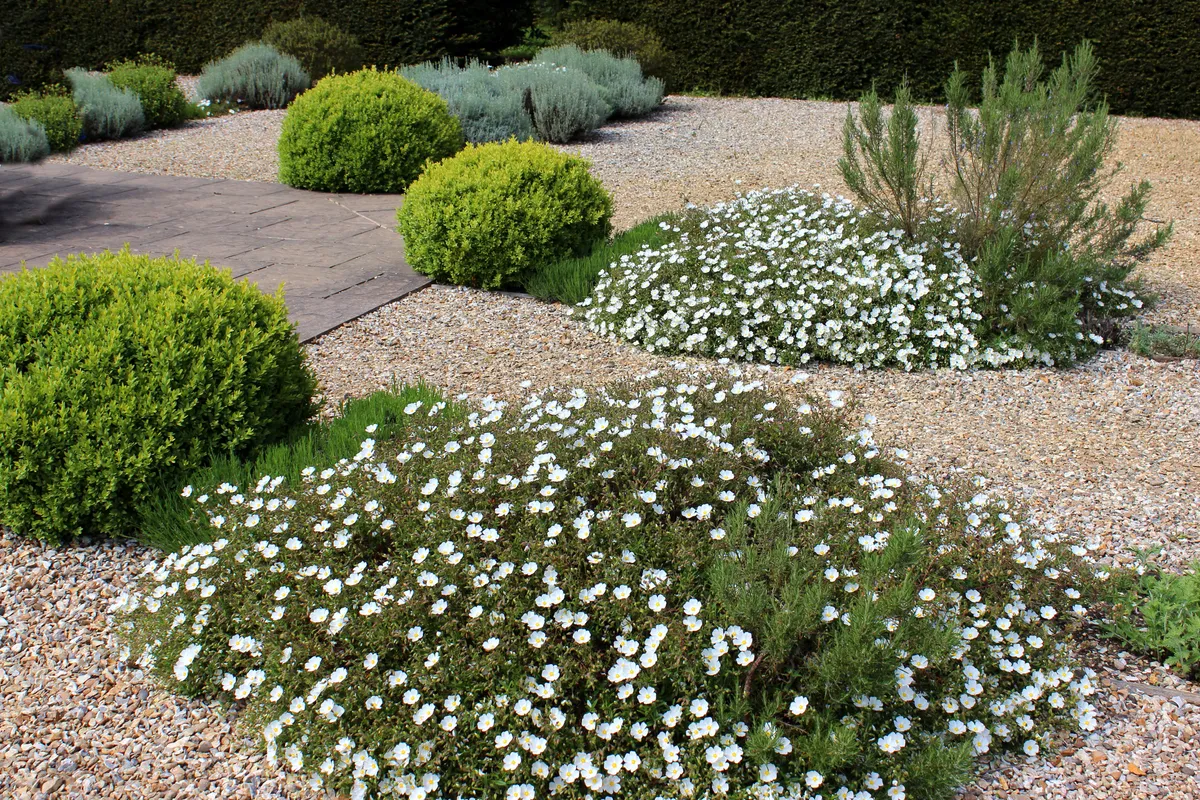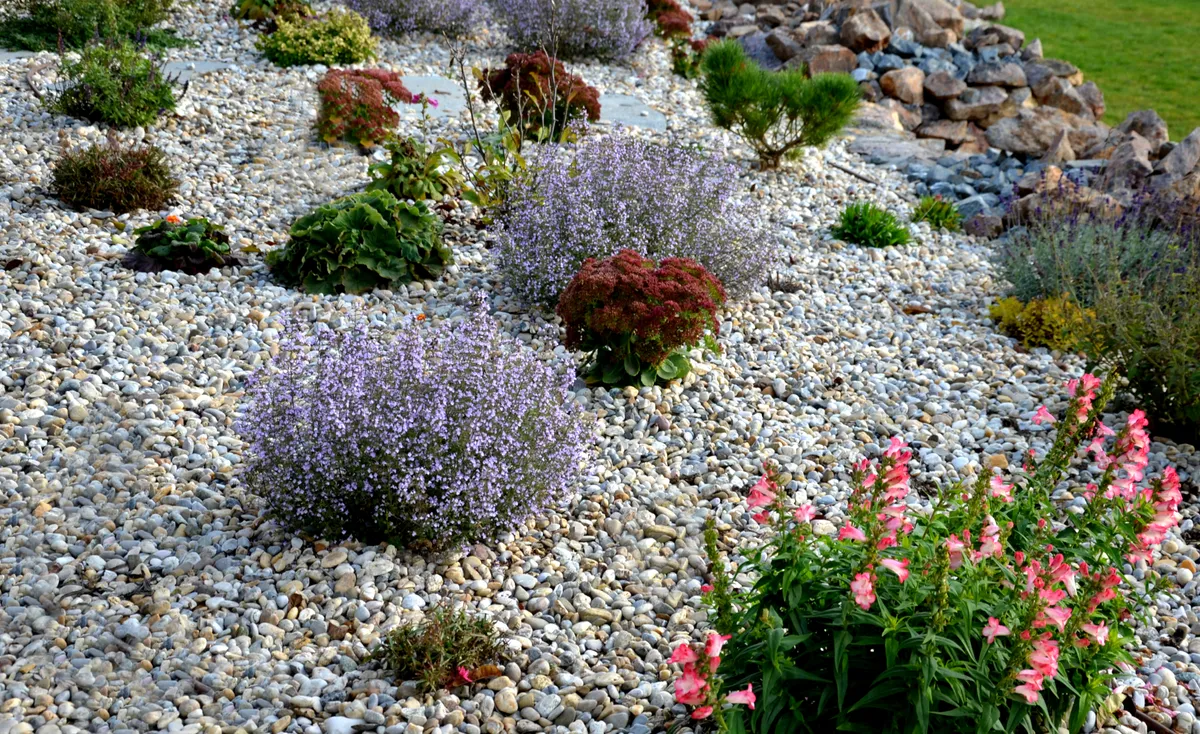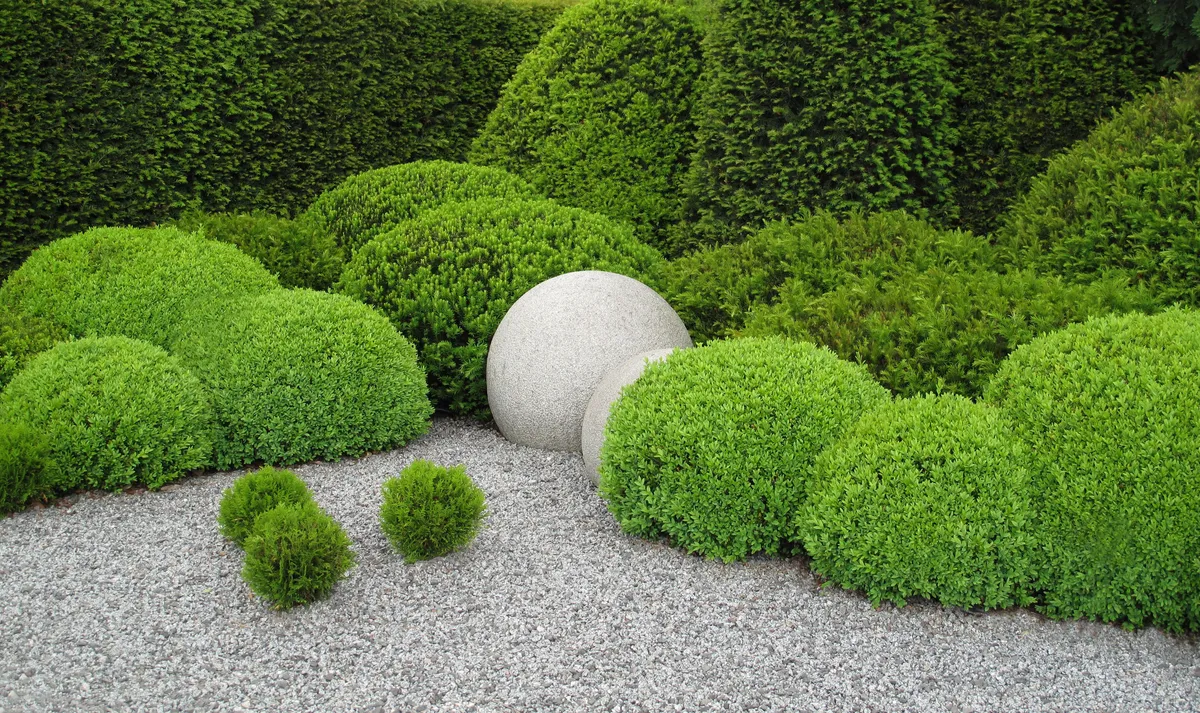A gravel garden is a great option if you wish to create a low-maintenance or Mediterranean-style garden, says award-winning garden designer and founder of Border in a Box Nikki Hollier. These types of gardens use plants that are drought tolerant, which reduces the need to water regularly - although some minimal weeding may still be required.
By choosing the right hard and soft landscaping, a gravel garden can be beautiful, practical and include a planting scheme which will make it attractive to wildlife.
How to create a gravel garden
Choose your gravel
When planning your garden, the soil is the first thing to consider. If you have clay soil, you will need to add plenty of organic matter as a lot of the plants used in a Mediterranean style of garden prefer a sunny spot with well-drained soil.
Next decision is the gravel – there is a vast array to choose from. With different sizes and colour, there should be something suitable for everyone’s taste whether that be traditional, Japanese-style or an industrial look. I would suggest getting a sample of the different types you like and taking them home to try as it will look different in your own setting.
When choosing the type of gravel, it's also important to consider if it will be walked upon, as angular medium-grade gravel is easier underfoot. Plus, if you use small (10mm or below) stones, you could find your garden is suddenly more attractive to cats!
How to plant in gravel
Any surface dressing helps shade the soil and keeps it cool which prevents it from drying out as fast after rain or watering and this allows more water to go into the ground for later use. Adding large stones, rocks or boulders creates an interesting focal point, and it can also decrease the quantity of water needed as the soil dries out less quickly.
After levelling and raking the surface of your garden border, lay landscape fabric over the surface and cut a cross in the fabric and place your plant through it. Once all your plants are in place you can gently add your chosen gravel to a depth of around 5cm. It’s cheaper to buy gravel loose rather than in individual bags (which also cuts down on plastic waste).
Best gravel garden plants
So once you’ve chosen all your hard landscaping materials, the exciting bit is the plants which will bring it to life! Remember the old adage that planting in odd numbers – threes and fives are ideal - is more pleasing the eye.
There are many plants that are well suited to dry conditions. As a general rule of thumb choose plants with the following attributes:
- Small leaf: such as Verbena bonariensis, Thyme, Erigeron karvinskianus
- Silver leaf: Olive tree, Santolina chamaecyparissus and Lavender
- Thick leaf: Sedum, Sempervivums
- Hairy leaf: Phlomis italica, Stachys byzantine (commonly known as lambs ears, as they are so soft and tactile)
When planting small plants they can become swamped by gravel, so plant them so that that they are raised slightly above the level of the gravel. If you want to create a tiered effect, have taller plants at the back of the garden and shorter plants at the front.
Gravel garden ideas
Follow Nikki on Instagram






